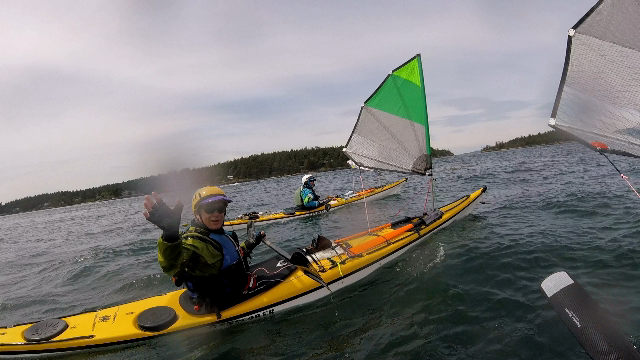
As Mountaineers, we are committed to learning from our experiences. We examine every incident that happens on a Mountaineers trip for opportunities to improve the ways we explore and teach. Our volunteer safety committee reviews every incident report and picks a few each month to share as examples of ‘Lessons Learned’. The trip report below describes what happened on this trip, in the leader’s own words, and outlines the lessons the leader has identified. In some cases, we offer additional key learnings from the incident.
Sharing incidents creates an opportunity to analyze specific incidents and also identify larger incident trends. We appreciate every volunteer trip leader who takes the time to share their incidents and near-misses so that others can benefit. We ask that readers engage critically and respectfully in the spirit of sharing and learning.
Sea Kayaking, Blake Island – 24 November
FROM THE INCIDENT DATABASE: LEADER INCIDENT REPORT
Leader
We were practicing capsize and recovery with a sail and drew attention from a coast guard helicopter that happened to be passing overhead. We were just off the SE corner of Blake Island.
The student was doing the kayak sailing class 1, which includes capsize and recovery with sail. He capsized, exited, and was working on securing the sail to the deck. Because it was his first time, this was slow going. But he was making progress, so I let it proceed.
Just as this exercise started, a coast guard helicopter passed over us from the south heading north. They circled Blake and passed over us again while the exercise was still in progress. My radio was off but I gave the hand patting head “OK” signal. They circled over us close. Clearly, they were concerned.
At this point, the student had the sail down and I was occupied getting him back in his boat. Once he was stable, I turned on my radio to marine channel 16. There I heard end of conversation, asking a boat to investigate an incident. Thinking it was us, I called to the coast guard helicopter. They responded. I told them we were practicing recovery. They thanked us for monitoring channel 16. I thanked them for watching out for us. The investigation by boat was called off.
Interestingly, 15 minutes later, I heard another boat call to see if assistance was still needed. The coast guard station that responded (probably not the helicopter) said it was a recovery exercise and no assistance was needed.
We do recovery practice all the time, usually without creating undue concern. I once had a private boat divert to check on an extended rescue scenario. I’ve heard stories of people on shore becoming concerned. I think there have been some cases of emergency services being called.
Lessons Learned
Leader
Recommendations? Turn your radio on to marine channel 16 when doing any exercises that may appear to be distressed.
I think a situation where one could respond by radio is rare. If someone on shore is concerned, they will call by phone. Private boats might approach to offer assistance. Only larger vessels, distant vessels, and aircraft are likely to try radio first.
But it is easy to have the radio on and to be ready should someone call to check.
 David Shema
David Shema